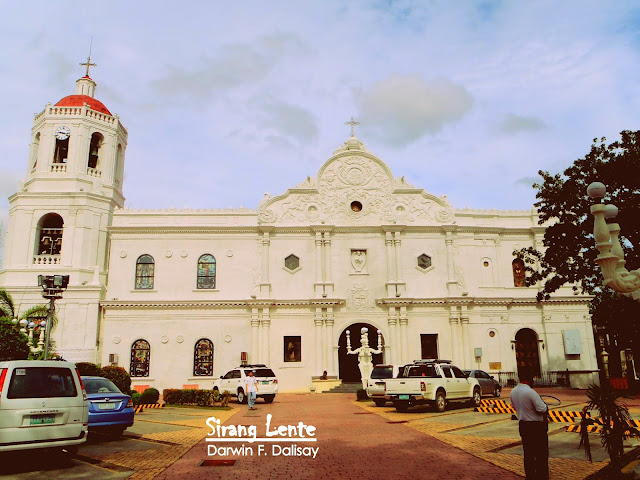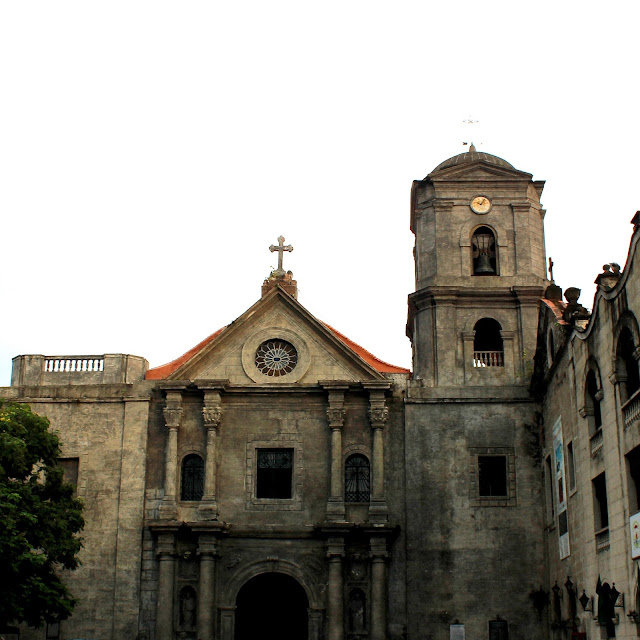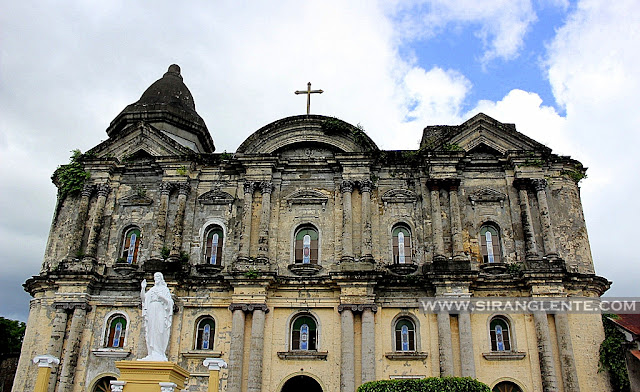
Mission: Sirang Lente, one of the Best Travel Blogs in the Philippines




The Ozamiz Cathedral houses the city's most significant relic and patroness - the Our Lady of Misamis, also known as the Virgin sa Cotta, The Blessed Virgin of Cotta, and Birhen sa Cotta. Initially, the statue of the patroness was set up outside the walls of Fort sa Cotta, but Fray Jorge Carcabilla moved it to this church. 1975, the statue was stolen and returned on December 8, 2017. Also, Ozamiz Cathedral is the home of the second largest bamboo organ in the Philippines, after the Las Pinas Bamboo Organ.

This is Our Lady of the Gate Parish Church, also known as Nuestra Señora de la Porteria Parish Church, commonly known as Daraga Church. Its structure has a Baroque design built by the Franciscan Friars in 1773. It served as the place of worship after the church of Cagsawa was destroyed by the eruption of Mt. Mayon in 1814. Also, Daraga Church served as the station of Japanese soldiers during the Second World War in 1945. It was rebuilt from 1971 to 1973. By the way, we still wished that Mt. Mayon would show its perfect cone at our next destination. So, Kuya Lijong brought us to this historical church. The location is also a perfect spot to see the beauty of Magayon, who was playing hide and seek with us. The clearing was negative, so let's proceed to its history. READ: BACKPACKING ALBAY, SORSOGON, CATANDUANES

Mt. Mayon is prominent worldwide because of its shape - a perfect cone; having said that, it's definitely the top tourist spot in Albay. According to its historical plate: "The spiritual administration of Cagsawa from 1587 to 1595 was under the Parish of Camalig. An early church was burned on 25 July 1636 by the Dutch, who ransacked the towns bordering Legaspi Bay. This church was built after 1724 by Fray Francisco Blanco. D.F.M. was buried by rocks and lava during the eruption of Mayon Volcano on 1 February 1814. The authorities of Cagsawa, meeting at Ligao, on 6 July 1814, decided to incorporate their town as part of Daraga. The first centenary of the destructions of the church was commemorated 1 February 1914, with a huge pilgrimage to the ruins where high mass was celebrated."

Also known as the Cathedral of St. Gregory the Great. According to its historical data, Albay Cathedral started as a chapel built in the 1580s by Spanish missionaries. The early structure was made from local products such as wood and nipa. Then, it emerged as a stone structure in 1800. This Cathedral is one of the top tourist destinations in the province, and it was our first destination. READ: BACKPACKING ALBAY, SORSOGON, CATANDUANES
 |
| Photo of Guadalupe Church. |

Is also known as the San Agustin Church is one of the UNESCO World Heritage Sites in the Philippines. The structure of Paoay Church comprises baked bricks, coral rocks, tree sap, and solid lumber. The 24 buttresses were also placed on each side of the church for support; the reason why it is still standing after the earthquakes in the 17th century up to this generation.

Bacolor Church (San Guillermo Church) in Pampanga is considered as the Cagsawa of the North. More than twenty years ago, Mt. Pinatubo erupted and many municipalities were left devastated, including Bacolor. This church was built in 1576 and was named after their patron saint San Guillermo Ermitaño. Destroyed by earthquakes and fire then was rebuilt in 1886.

It is the center of the Archdiocese of Cebu City. Cebu Metropolitan Cathedral was established as a diocese on August 14, 1595, and became the metropolitan archdiocese on April 28, 1934, with its first archbishop, Gabriel M. Reyes. The structure's construction was interrupted due to insufficient funds and other circumstances. The facade features a trefoil-shaped pediment decorated with floral carves.
 |
| Photo: Tourists entering Magellan's Cross. |
Magellan's Cross is a historical landmark and the most visited tourist spot in Cebu City. It is a Christian Cross made of wood erected by Ferdinand Magellan (a Portuguese explorer) during his exploration in Cebu, Philippines, on April 21, 1521. This Cross can be found inside an octagonal chapel in front of Cebu City Hall and beside Basilica Minore del Santo Niño. This is one of the most prominent tourist spots in Cebu. But, the current Cross is a tindalo wood where the splinters of the original Cross were encased. The wood of the original Cross deteriorated because the people were chipping some parts and making it as a souvenir in the belief that it was miraculous.

Commonly known as the Minor Basilica of the Holy Child, the Basilica Minore del Santo Niño is one of the minor basilicas in Cebu City. It is one of the oldest Roman Catholic churches in the country. Its current structure is situated on the exact spot where the image of Santo Niño was found in 1565 by the Spanish explorers led by Miguel Lopez de Legazpi. The statue is the same as the statue given by Ferdinand Magellan to the wife of Rajah Humabon 44 years later as a gift during their baptism on April 14, 1521, at the exact location of Magellan's Cross today.

Commonly known as the St. Anne Parish, Molo Church is opposite the town plaza. Molo is one of the seven districts of Iloilo City, formerly called Parian (Chinatown), because the residents here were mostly Chinese. Then, it was changed into Moro because of the frequent arrival of Muslim pirates from Mindanao, but it later evolved into this name – Wikipedia.com.

It is another example of the country's historical baroque architecture. Built in 1864, Jaro Cathedral was erected by order of Mariano Cuartero, the first bishop of Jaro. In 1948, this structure was destroyed by an earthquake and was restored in 1956 by the order of the first archbishop Jose Ma. Cuenco. The famous orator Graciano Lopez Jaena was baptized in this church. In 1976, the National Historical Institute proclaimed this church as a Historical Landmark.

This church is situated by the highway of Guimbal, Ilo-Ilo, and can easily be recognized because of its unique facade. After my visit to Miag-Ao Church, I traveled around 30 minutes to this church. According to my research, Guimbal Church or St. Nicholas of Tolentino Church doesn’t have any record of when it was erected or established. However, it was completed between 1769 and 1774 under Friar Juan Campos. 1893 it was further enlarged but later destroyed by fire during the Revolution in 1896 to 1898.



Also known as the Minor Basilica and Parish of Saint Martin of Tours is considered the largest church building in Asia, standing 88.6 meters (291 feet) long and 48 meters (157 feet) wide. I am eager to visit this old church because an earthquake hit the province and it created a crack in its wall.